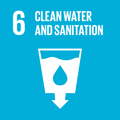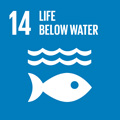- Docente: Domenica Tonelli
- Credits: 10
- SSD: CHIM/01
- Language: Italian
- Moduli: Domenica Tonelli (Modulo 1) Domenica Tonelli (Modulo 2) Isacco Gualandi (Modulo 3)
- Teaching Mode: In-person learning (entirely or partially) (Modulo 1); In-person learning (entirely or partially) (Modulo 2); In-person learning (entirely or partially) (Modulo 3)
- Campus: Bologna
- Corso: First cycle degree programme (L) in Industrial Chemistry (cod. 8513)
Learning outcomes
At the end of the course the student is able to understand the
principles defining analytical chemistry from the point of view of
the "problem solving" approach. Furthermore, he has acquired
knowledge as to: chemical equilibria in solution with particular
attention to the simultaneous ones with the aim of carrying out
simple qualitative tests and of defining the optimal conditions for
a reaction to occur; volumetric and gravimetric quantitative
determinations; standard analysis procedures, understanding and
development of a SOP; statistical treatment of the data and
significance tests for the final evaluation of analytical data;
potentiometry and its applications.
Moreover the student is able to draw up an analysis
certificate.
Course contents
Fundamentals of statistics in analytical chemistry. Quality of
analytical data. Significant figures. Sources of uncertainty.
Errors in chemical analysis. Gross, systematic and random errors.
Accuracy and precision. Propagation of errors. Methods for
reporting analytical data. Significance tests: Student's t. Test
for evaluating accuracy. Test for evaluating precision. Comparison
of two experimental means.
Acids and bases in water. Arrhenius, Bronsted-Lowry and Lewis
theories. Strength of acids and bases. Polyfunctional acids and
bases. Ampholytes. Buffer solutions. Systematic approach to the
chemical equilibria. pH calculations. Acid-base titrations methods
for estimating thre equivalent point. Titration error.
Solubility equilibria. Solubility as a function of pH.
Precipitation titrations.
Complexes formation. Complexation as a function of pH. Conditional
and thermodynamic constants. Solubility as a function of
complexation. Complexometric titrations. EDTA and analytical
applications. Interferences and masking.
Redox equilibria in homogeneous phase. Electrochemical cells.
Influence of pH, solubility and complex formation on redox
potential. Stability of redox systems in water. E/pH diagrams.
Redox titrations.
Potenziometry. Direct and indirect measurements. Indicator and
reference electrodes. Ion selective electrodes. Potentiometric
titrations.
Application of analytical methods to the solution of real problems.
Laboratory course:
Frontal lessons
Tracking laboratory activity. The volumetric glassware: characteristics and use. Practical features of volumetric titrations: determination of endpoint by means of indicators or graphical and numerical methods. Primary standards. Error treatment. Practical features of gravimetry. Introduction to potentiometry
Lab activity
The laboratory experiences could undergo changes according to the needs related to the COVID emergency and to adapt to the organizational needs of the new site. The experiences will be structured in such a way as to require a planning by the students for the development of the most suitable analytical methods for the study of real samples.
The main topics that will be covered are: preparation of solutions; qualitative chemical analysis:
cations identification; acid-base titrations, redox, precipitation and complexometric titrations conducted both in the traditional way and by the potentiometric method. Applications will be carried out to determine the concentration of analytes in unknown solutions and in real samples.
Numerical exercises
Besides the laboratory experiments the students will have to conduct the statistical treatment of the experimental data obtained during their Lab activity. This work will be done by fullfilling a report which will be evaluated and will partly contribute to the final score. Furthermore, the students have to compile their own laboratory notebook, recording their activity and results.
Readings/Bibliography
D.C. Harris, Chimica Analitica Quantitativa, Zanichelli, Bologna, 2017.
V. Di Marco, D. Pastore , G.G. Bombi, Chimica Analitica, Trattazione algebrica e grafica degli equilibri chimici in soluzione acquosa,Edises, Napoli, 2015.
D.A. Skoog, D.M. West, F.J. Holler, S.R. Crouch, Fondamenti di Chimica Analitica. EdiSES, Napoli, 2015.
D.S. Hage, J.D. Carr, Chimica Analitica e Analisi Quantitativa, Piccin, Padova, 2012.
Teaching methods
Lectures integrated by exercises related to the discussed topics. It is encouraged individual study on text books and team-discussion on the arguments under study. The Course is integrated with that of laboratory work. Theory and laboratory work must co-exist since practice not only develops the capability of the student to think but also to act independently.
Assessment methods
The learning assessment takes place through a final written exam. The score is integrated with that obtained for the Laboratory of Analytical Chemistry course (only one final mark).
The final score comes from the weighed average of the marks of the written exam and of the overall evaluation of the Lab activity, which can also be based on a final experimental test.
The written test is made of two parts which generally take place in two different days: the first consists of "preliminary questions" concerning the basic skills considered essential for passing the exam, the second consists of "open-ended questions" related to the in-depth and advanced knowledge of the contents of the theoretical and laboratory course.
Passing the "preliminary questions" test is mandatory to access to the second exam test.The preliminary section is considered passed if a minimum score of 15/20 is reached. The preliminary test, if passed, allows access to the second test to be taken on that round and/or in the following one.
The second test assigns 13 points, and the overall mark of the written tests is obtained from the sum of the scores (max 33/30).
Use of textbooks, smartphones and notes (or slides) taken during classes is prohibited during the test. It is compulsory to bring a calculator for the exam (the ones available in tablets or mobile phones are not allowed) and the required stationary (pencils, set square, rubber and pencil sharpener) to draw graphical plots.
The material on which the exam would be written (paper sheets and graph papers) shall be provided by the Teacher.
Teaching tools
Lectures and class-room activities are carried out with the help of transparencies and video-projection. Laboratories, software for data treatment, experiences booklet.
The teaching material is available to the students. The experimental work will be carried out in the analytical Laboratory.
Office hours
See the website of Domenica Tonelli
See the website of Isacco Gualandi
SDGs



This teaching activity contributes to the achievement of the Sustainable Development Goals of the UN 2030 Agenda.
